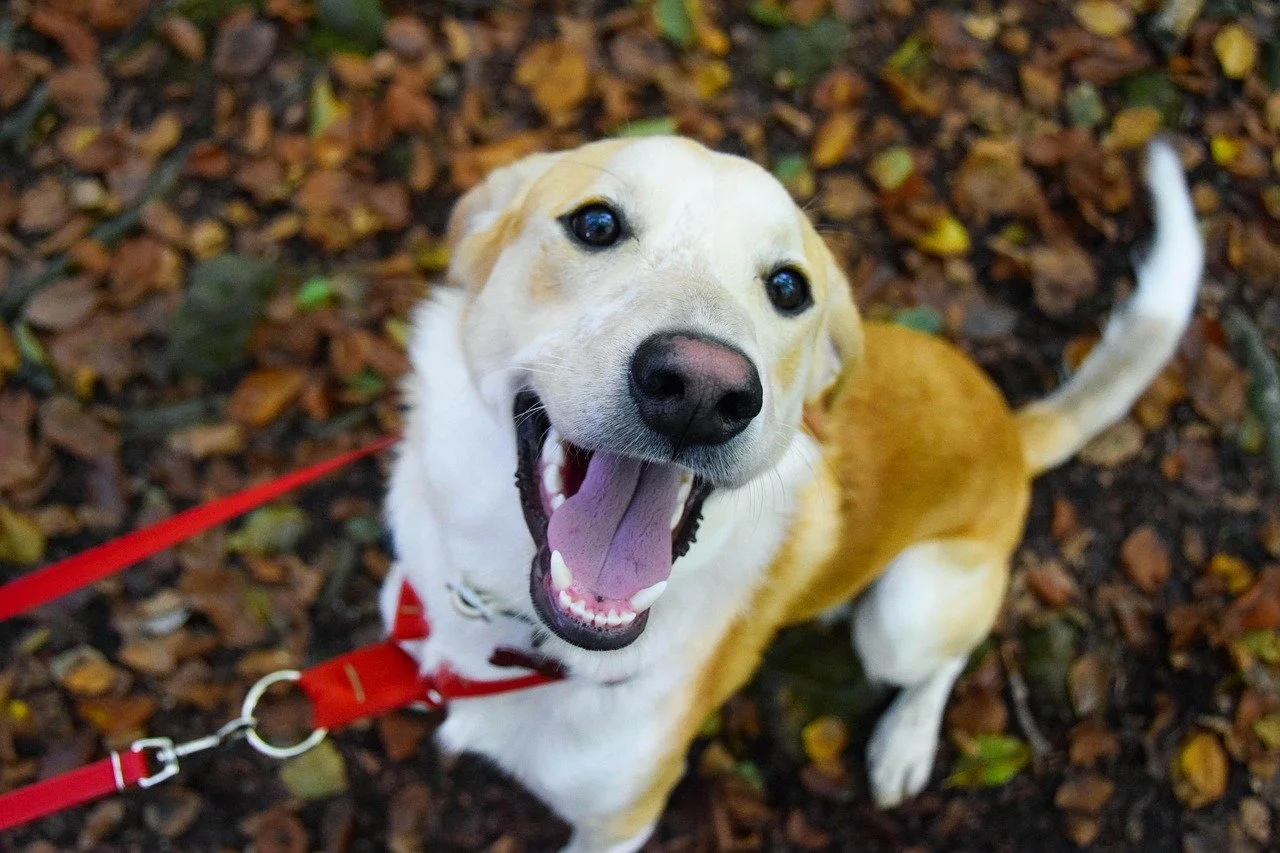Guide to Bringing Home A New Pet
Are you ready for this level of happy??
So, you’ve decided to bring home a furry friend. Awesome!
Are you ready? Let’s make sure!
Maybe you’re new to this and a little lost. Maybe you’ve had pets before but had some hiccups along the way. Maybe you have another dog or cat right now, and are worried that the transition to a happy little family is going to be a challenge.
The good news is, if you’re feeling this way, it’s actually a healthy thing. Having a pet is a big responsibility, and an honour. It’s not a role to be entered into lightly.
Let’s face it. They’re depending on you to give them a happy and healthy life. A certain amount of trepidation is normal.
But that shouldn’t hold you back from having a pet. You just need to be prepared.
Getting ready!
Make sure you have all the supplies you need, and a comfortable space prepared for your new friend before you bring them home.
A collar, leash, food and water bowls, a bed or blanket, a crate or carrier, a couple of toys, treats and a litter box(and litter) for a feline friend are standard.
Try to find out or obtain the same food they are currently eating. You can transition them slowly to a new food by gradually mixing it with their old food. But a few days on their current food will help prevent some pretty distressing(and disgusting) stomach upset side effects.
You shouldn’t be making a run to the pet store on your way home. Your new pet will be stressed and/or very excited. Take them home and get them settled quickly to decompress. Supplies should be purchased beforehand.
If you’re bringing home a puppy or a kitten, safety-proofing your home before their arrival is a good idea. Heck, it’s not a bad idea with adult pets either while you learn what makes them tick.
Some dogs are natural garbage hounds who just can’t keep their heads out of the trash. Yes, you can train that out of them, but their first few days is not time to do that.
Some cats are irresistibly drawn to any little string that dangles. Let’s not set them up to fail.
Make sure chemicals and medications are put away safely. Trash cans should be stored out of reach. Secure loose cords and any other hazards.
I’ve been known to sit and crawl on the floor to look around for those little temptations that a curious critter just may not be able to resist.
Have a safe space ready for your new pet to adapt to their new home. Cats, especially, can benefit with their own room or area that is blocked off from the chaos of the rest of your household. Place their food and water dishes on one side of the room and their litter box to the other side.
Even dogs may need the safety of a crate(if crate trained), or a room blocked off with baby gates where they can relax and take a breath from their well-meaning but over-excited new family.
Wellness Exam
If you don’t already have a veterinarian, now’s a good time to find one. You should set up an appointment as soon as possible for your new fur baby.
A wellness exam ensures your pet is healthy, establish baseline health values, and gives your vet an opportunity to meet your new friend.
They will check vitals, do a physical examination of their eyes, ears, mouth, skin and coat.
They will recommend bloodwork, and possible vaccinations or parasite control measures.
They can answer any questions and concerns that you may have.
They will also be able to provide guidance on nutrition and exercise for the on-going health needs of your pet.
If it hasn’t been completed already, micro-chipping your new pet is well worth it!
Pick Up Day
Now, this isn’t the time to be that independent woman(or man), if you can help it. Bring a friend of family member along to help you with your new fur baby. They may be anxious or even just super excited for this journey.
One person can focus on driving while the other can focus on the pet.
They should be contained in a carrier or crate, if possible. This is the best way to keep them safe in the vehicle, and prevent them bolting for safety as soon as you open the door.
If you’re picking up a dog or puppy, keep them on leash when you arrive and let them explore their new surroundings.
A little tour of your yard will tell them a lot about their new home. They’re going to need a good sniff! Give them time.
If you’re bringing home a new cat or kitten, that safe room you set up for them is where you’re going to put them first.
Set the carrier in the room, open the door, and let them come out on their own terms. Kittens will usually give in to their curiosity quite quickly. Adult cats may take a while. It could be hours. Give them their space and plenty of time to adjust.
If you have other pets, we’ll talk about those introductions. Your front entrance is not the place for that to happen!
For the first few minutes, your other pets shouldn’t be present. Territorial disputes and fear-based aggression can definitely cause a lot of drama right out of the gate.
Give them time to adjust and they can be besties (or, at least tolerate each other) later.
Introducing Your Pets
The techniques for introducing pets can be a little different for each pet but let’s go over some basics:
Dog and Dog
If at all possible, it would be ideal for your dogs to meet before you ever choose them. Let’s face it, there are people in your life that aren’t going to be your friends. We all have different personalities and some just clash. It’s the same for your pets.
We got very lucky when we adopted Lucy. We’d only had Jack for a couple on months. Both dogs had grown up with other dogs and got along well with others.
But we still took some precautions. Meeting in a neutral setting, such as a park, keeping both on leash and watching their body language is extremely important.
This is where we got lucky. They were instant besties!
They couldn’t have been more happy to have found a new friend. It made my heart swell as I knew they would be a perfect fit.
Things might not be so easy with your introduction. But take heart. They might be stand-offish or a little shy.
Just watch for those red flags of aggression, fear, resource guarding or bullying.
If you encounter this behaviour, keep them separated in different areas of your home until they can adjust.
Get the help of an expert such as a reward-based trainer or veterinary behaviourist. Positive reinforcement training can make a huge difference. They’ll be able to guide you through this transition.
Chances are, they can work through it. You just have to be patient and consistent, as with all training.
Cat and Cat
When you bring home your new cat or kitten, you’re going to give them their own space for a few days. This is perfect for their introduction to the other feline family members.
Your current cat will have free reign of the house, except for that room. It’s important for them to feel that their territory isn’t being taken by this stranger.
They will be able to smell each other under the door but will remain safely separated.
Once the new cat has imprinted their smell on something like a blanket or towel that they’ve slept on, you can bring this item out for your current cat to smell.
You can take one of your current cat’s items and place it in the room with the new cat.
Let’s get them as used to each other’s scent as possible.
A baby gate or screened doorway is a great next step. Let them see each other but still maintain a feeling of security.
Continue to feed or give treats to both cats, gradually getting them closer so they associate each other’s smell and presence with something they enjoy.
Once they are comfortable with each other in this scenario, it’s time for some short, supervised meetings.
Watch for stress signs such as hissing, flattened ears or aggressive swatting.
If this happens, separate them and try again later. Patience is key.
Increase the duration of these visits until they are comfortable.
Once they’ve had several positive interactions, you can allow them to gradually spend as much time together as they’d like.
No guarantees that there won’t be the occasional spat. But, with careful introductions, that will be more about sibling-type arguments than territorial disputes.
To keep the peace and prevent resource competition, ensure there are plenty of food bowls, water bowls, and litter boxes available for all your feline friends.
Dog and Cat
If you are going to have a multi-species household, it’s a good idea to know if the dog has prey drive issues.
While it’s possible for them to learn to co-exist, know that this is a tougher road and many rescues and shelters will discourage it.
It’s hard on the cat if the dog is constantly trying to catch them. And, frankly, it’s going to be hard on you to prevent it.
Teaching your dog the “leave it” command, giving your cat plenty of safe spaces to escape, and keeping them completely separated when unsupervised may all be necessary.
But, let’s assume there are no prey drive issues. They will still need some careful introductions.
I can tell you that this was a fail for us. When we brought home our first dog, we already had a rather feisty feline at home.
He was in the habit of running to the door to greet us. Well, you can imagine the look on his face when the door was opened and an energetic 85 lb dog bounced through the door.
We did have a safe room for him, thank goodness. And, eventually, he emerged from it.
But I still feel a little guilty about our poor execution of that introduction!
If a new cat is being brought home, the techniques for cat to cat introductions are useful.
Keep the new cat in it’s own safe space, let them slowly adjust to each other’s scent, carefully supervised introductions, with your dog on leash, and positive reinforcement with food and treats are recommended.
If you are bringing a dog into a new home, you don’t want to just force your resident cat into a single room and give the dog free rein.
A new dog shouldn’t be wandering freely at first, anyway. Keep them on leash and separated into their own space with baby gates or even their own crate, if they’re crate trained.
Give your cat the freedom to come on their own terms but have a safe area to escape if they need it.
They will be curious to see the stranger. But they need to feel safe in their own home too.
With proper introductions, Lucy and Hunter have become family
Conclusion
I guess it’s safe to say that leashes, baby gates and treats will be important tools in your toolkit. Knowledge, preparation, careful observation, and a good dose of patience are also key.
Give your pets lots of time, lots of love, and lots of grace. Don’t punish the behaviour you don’t desire but be sure to reward the behaviour you do.
Above all, have fun! Learning about your new pet, with all their quirks, and helping them become a part of your crazy little pack is so worthwhile.
Take care of them and make them happy and they will reward you with more love than you ever thought possible.


